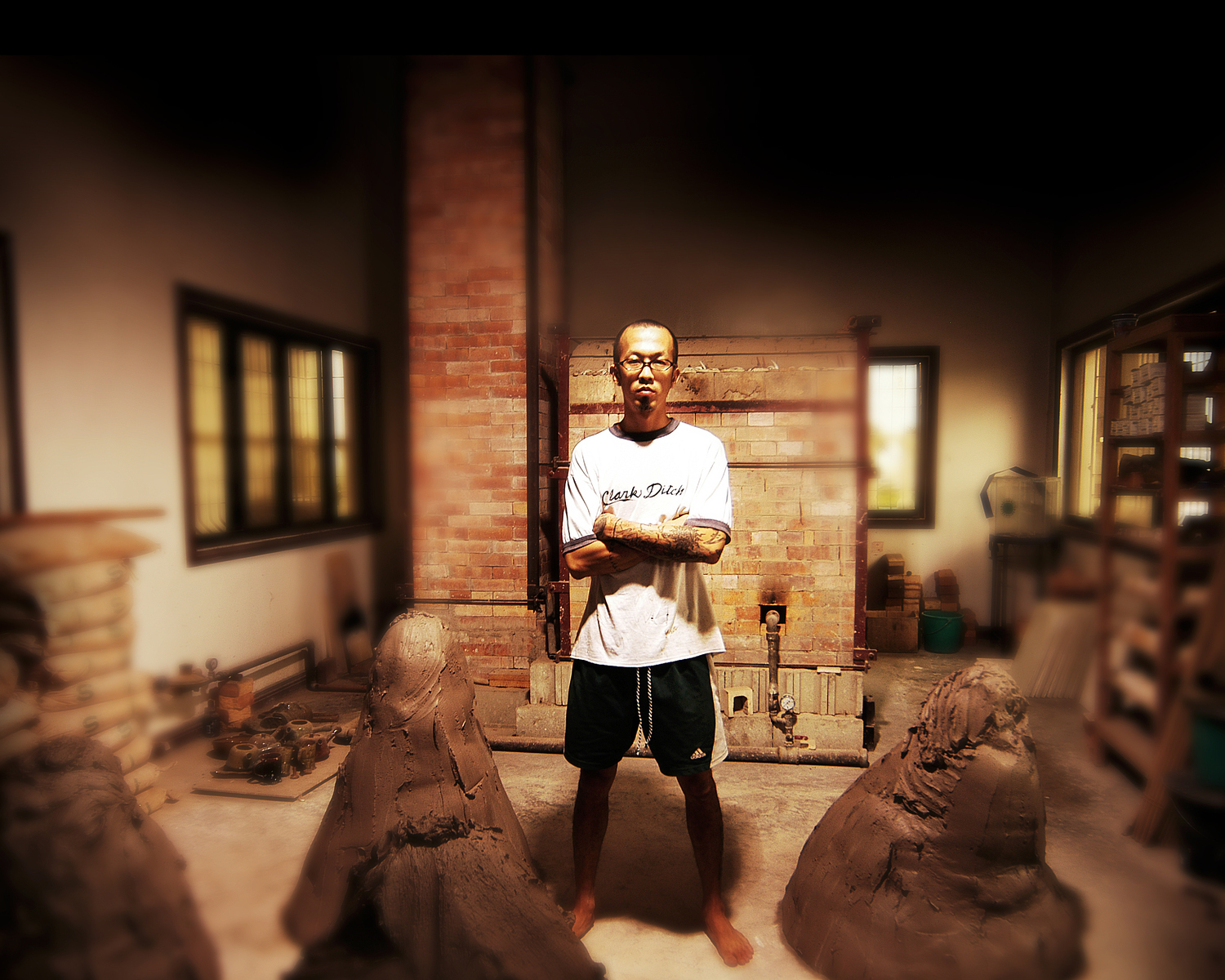"Hadrian the potter" Manila Standard March 19, 2002 by Tere B. Lopez
Pottery is one of the most ancient arts, with the oldest known body of work dating back to the Jomon period (from about 10,000 to 400 BC) in Japan. It is interesting to note that even these ceramic works already boasted of a uniqueness and sophistication in technique and design.
Excavations in the Middle East have turned up primitive fired clay vessels estimated to be more than 8,000 years old. They were already potters working in Iran by 5500 BC. In fact, there is a great possibility that earthenware was probably being produced even earlier on the Iranian higher plateau. Back east, Chinese potters had developed their own techniques by about 5,000 BC.
There are three types of pottery wares- earthenware, stoneware, and Chinese porcelain. Earthenware is composed of clay (usually blended clays) and baked hard, the degree of hardness depending on the intensity of the heat. When glaze was invented, earthenware was coated with glaze to make them waterproof. There were times, though, when glazing was used purely for decorative purposes. Stoneware is derived from earthenware except that the former is fired at high heat to make it nonporous. Thus, stoneware became more preferred for home use. Porcelain is a Chinese invention. It is believed that porcelain was first made by Chinese potters toward the end of the Han Dynasty (206 BC to AD 220). It was during this period that pottery became more refined in body, form, and decoration.
And that, in a nutshell, is a condensed history of pottery. Thanks to the internet, i was able to get this information.
Now, let me share a brief history of my personal affair with pottery. It was in the late '70s that I became acquainted with clay pots. Basically, I had a set of clay cookware (for kids, of course!), which my lola bought for me during a trip to Antipolo. Whenever I would break one of my precious miniature cookware pieces, my mom would oblige to buy me a replacement at the market. And then, during my growing up years (and even to this day) I would encounter the palayok in restaurants, as it was used for serving my favorite kare-kare. I even used a palayok for a science project once in high school. It was the container in which I grew my bonsai (never mind the fact that my teacher then found it ridiculous to use a palayok; for the record though, my bonsai thrived in that container so she had to give me a passing grade).
Today, I am happy to tell you that I have met a real, honest-to-goddness potter: Hadrian Mendoza. How did I chance upon him? Well, wish I could relate something out of the ordinary, but it really was out of need. There I was again, looking for something interesting to write about and there he was- Hadrian.
Of Filipino descent, he was flown to the United States (to Washington, DC, to be exact), soon after his auspicious birth. That was sometime in 1979 to 1980. He went to school at Mary Washington College in Virginia and the Corcoran School of Art. In 1996 to 1997, he was awarded the Anne and Arnold Abramson Award for Excellence in Ceramics. In his own words, he "makes pots and teaches pottery."
Of course, you might ask, "What kind of job is being a potter? Well, it is probably similar to being a painter or a sculptor. "I made a camel the first time I touched clay," he shares of his personal love affair with pottery. Mind you, he's been playing with play dough all of his life. And when he turned professional, his first handiwork was, you guessed it- a palayok!
Asked what drew him to his art, he merely shrugs his shoulders. It seems more like instinctively knowing what you want to do. Hadrian currently divides his time between teaching pottery at the Pettyjohn-Mendoza Pottery School (Garden Square building in Greenbelt, Makati) and making his own collections for shows and exhibits. While he sees teaching as a way to spread the word on the beauty of making pottery, he still prefers being a potter. That is, making and creating pots as a form of artistry.
And being the true artist that he is, he stays in Makiling, where he "draws energy from the mountain." Typical of most artists, he also has curious working hours. "I work just before the sunsets till before sunrise," he explains. Why? He attributes this to his belief that he is an old soul. Believing in destiny, he is not one to openly advertise his work. Similarly he knows he will be "found" by fate. (According to him, it is much like me finding him and thus he was afforded a chance to tell more people about pottery).
As a potter, he has simple needs for his art form. Clay, wheel, glaze, kiln, and hands. Pottery, he says, is done by the hand and that's what makes it special. Then, of course, lots and lots of imagination.
Hadrian holds anywhere from four to six shows each year. He has an ongoing show, entitled "Spontaneuosly Raw," at Izukan Gallery (88 Corporate Center, 141 Valero corner Sedeno Sts. Makati).
